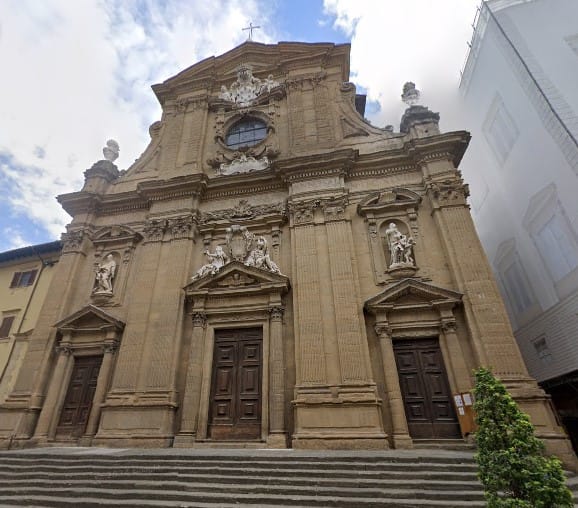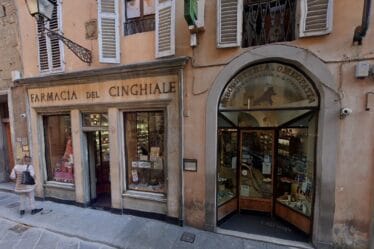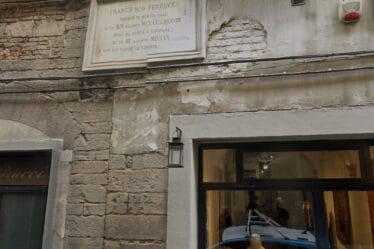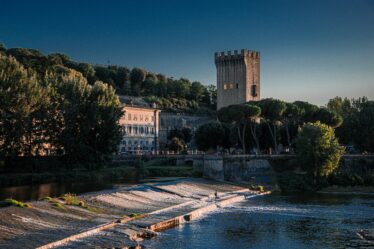

Theatrical Facade: A Masterpiece of Art and Architecture
The stone facade of this historic church is an architectural marvel that captivates visitors with its unique design and rich symbolism. One of its most striking features is the eight-step stairway, which resembles a theater stage. Adding to this dramatic effect, parasts adorn the scenography, mimicking panels or massive draped fabrics.
A Three-Nave Illusion
Inside the church, the space is predominantly a single hall with side chapels, characterized by contrasting colors that enhance its visual appeal. However, the ornamental design of the three central entrances on the facade creates the illusion of a three-nave structure, adding depth and grandeur to the overall impression.
Medici Coat of Arms and Symbolism
At the top of the facade, beneath the tympanum, lies the enormous marble coat of arms of the Medici family, an opulent creation by sculptor Carlo Marcellini. This emblem, held aloft by two putti, reflects the Medici family’s enduring legacy. Flanking this central symbol are two polls with flames representing the fire of faith, sculpted by Pietro Romolo Malavisti. Below, a strip running along the facade bears an inscription honoring Cardinal Carlo de Medici, the church’s largest donor, who contributed 120,000 shields to its construction.
Statues of Saints: A Celebration of Devotion
Two magnificent statues grace the facade, each situated in a niche beneath the decorative band. On the left, the statue of San Gaetano di Thiene, sculpted by Balthasar Permoser, stands as a testament to the German artist’s skill and his fourteen years in Giovanni Battista Foggini’s studio. On the right, the statue of Sant’Andrea Avellino, created by Anton Francesco Andreozzi, complements the artistic harmony of the facade.
The Order of Theatines’ Legacy
Above the central door’s eardrum, the coat of arms of the Order of Theatines is prominently displayed. On either side, Balthasar Permoser’s depictions of Poverty and Hope add a layer of spiritual symbolism to the facade’s narrative. Together, these elements embody the values and aspirations of the religious order.
Artistic and Historical Significance
The facade’s rich ornamentation and historical context make it a treasure trove of artistic expression and cultural heritage. From its theatrical stairway to its symbolic sculptures, the design invites a deeper exploration of its architectural innovation and artistic mastery.
This masterpiece deserves renewed attention from art historians and architecture enthusiasts alike, offering a compelling glimpse into the confluence of faith, art, and Medici patronage during its era.



